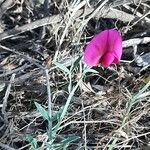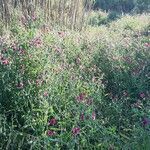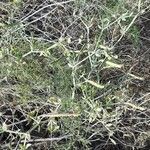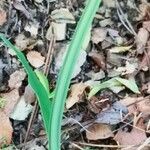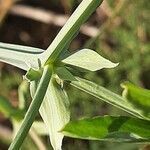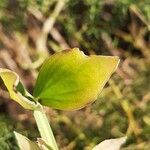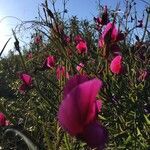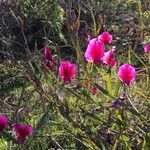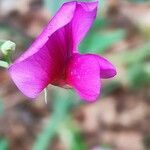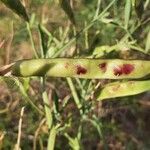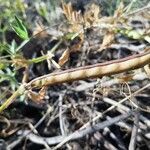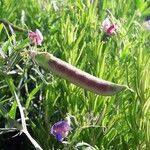A straggling annual climbing plant. The stems have wings and are 1.5 m long. It has 2 leaflets which are narrow and long. They are 2-8 cm long by 0.4-1.8 cm wide. The leafy shoots (stipules) at the base of the leaf are 1.2-2.5 cm long. The flowers are 1-3 on long stalks which are 10-18 cm long. They are purple with a pale tip. The fruit is a pod up to 10 cm long and 8 mm wide with 6-8 seeds.
